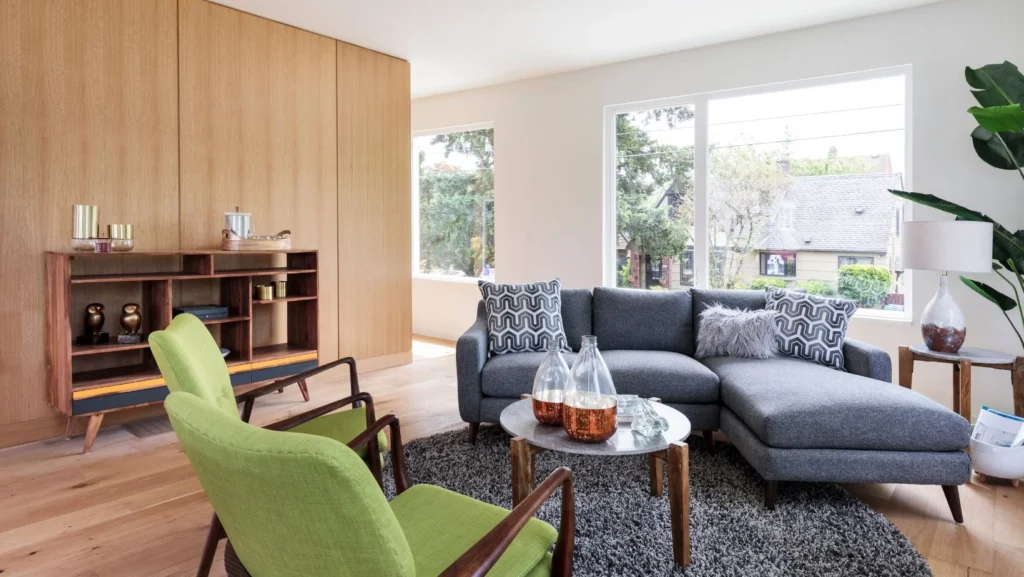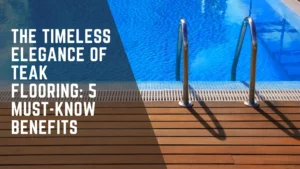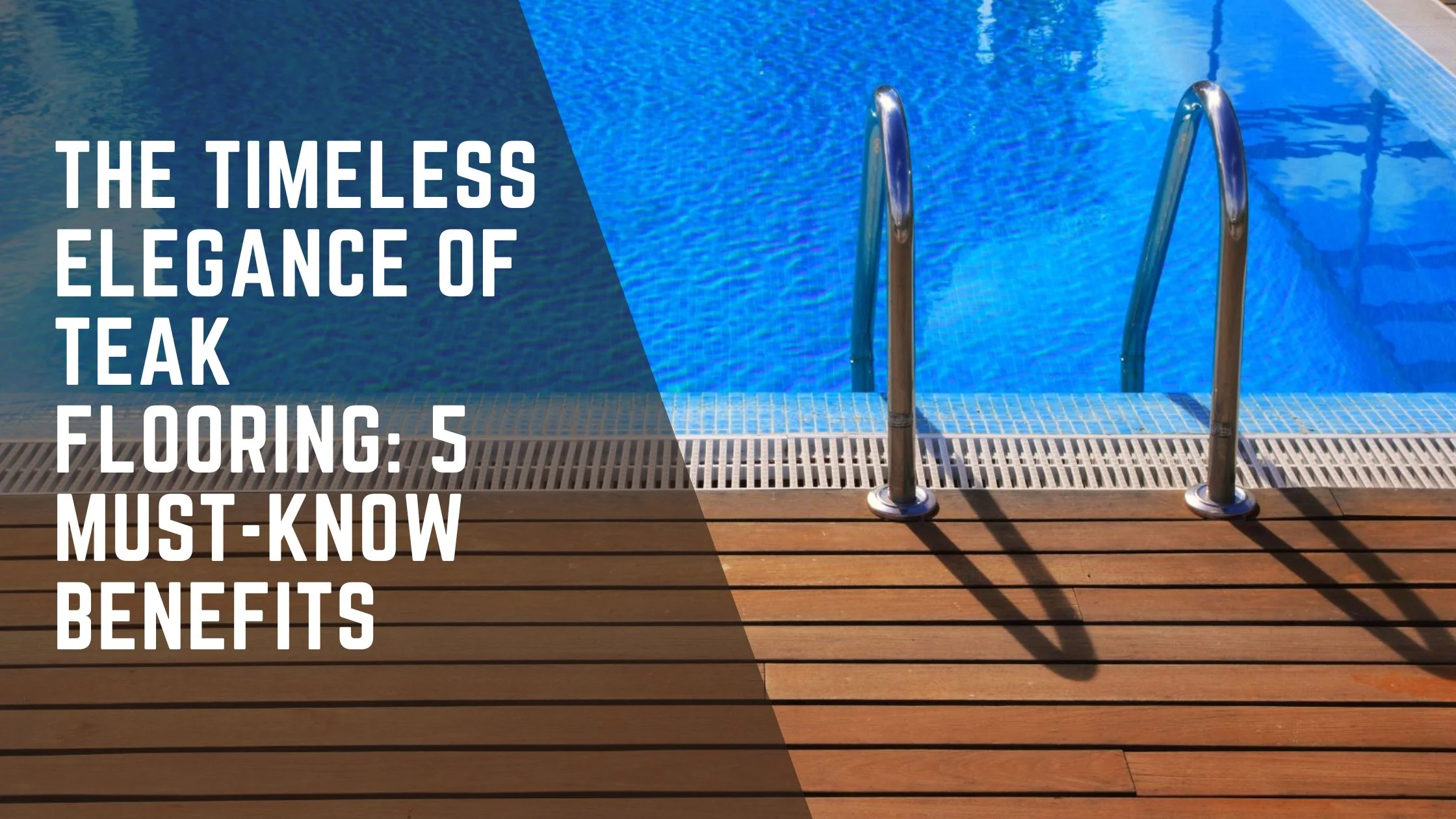A rising trend in the world of interior design is taking inspiration from past decades to create unique and modern looks. Mid-century modern decor has been making a comeback in recent years with its retro vibe bringing a sense of stylish nostalgia into homes all over the world. This fun and timeless style incorporates iconic elements like curved lines, natural materials, geometric shapes, pops of color, and more—all coming together to create spaces that are chic yet comfortable. So if you’re ready to take an exciting journey through mid-century living with a modern twist, keep reading to find out how!
What Is Mid-Century Modern Style?
Mid-century modern style is a design movement that emerged in the Mid-20th Century, roughly between the 1930s and 1960s. It is characterized by a unique blend of simplicity, functionality, and elegance that became increasingly popular post-World War II. The core elements of the style include clean lines, the use of natural materials, and a keen appreciation for open spaces. This style has found renewed popularity in recent years and has influenced many modern designs. It is not just a trend but a style that has stood the test of time.

Key Elements of Mid-Century Modern Design
1. Clean Geometric Lines
- Emphasis on clean and sleek lines throughout the design
- Minimal use of decorative embellishments for a streamlined appearance
- Prominently featured geometric shapes create a sense of order and balance
2. Functionality Over Adornment
- Prioritizes practicality in furniture and decor choices
- Focuses on the purpose and functionality of each piece
- Avoids excessive ornamentation by allowing the form to follow the function
3. Material Variety
- The predominant use of teak, rosewood, and oak for their natural beauty
- Metals like steel or chrome are incorporated for a modern touch
4. Vibrant Color Accents
- Regular inclusion of bright and vivid colors to enliven the space
- Colorful accents serve as focal points and create visual interest.
- Contrasting hues or pops of bold shades amplify the overall aesthetic.
5. Integration of Metals, Glass, and Vinyl
- Metals like steel or chrome add a sleek and industrial feel.
- Glass elements provide transparency by reflecting light and enhancing openness.
- Vinyl is used for upholstery, offering durability and a modern flair.

How to Incorporate Mid-Century Modern Decor into Your Home?
Include a Variety of Materials
After World War II, previously scarce building materials like steel, iron, plywood, and glass became readily available once again. Mid-century furniture designers seized the opportunity to explore new possibilities with these resources. They embarked on experiments with molded plywood, wood veneers, creative lighting techniques, and exposed surfaces. Moreover, they blended natural materials with affordable synthetic alternatives like Plexiglas, Lucite, vinyl, and fiberglass, thus expanding the range of materials used in their designs.
Play with Biomorphic Shapes
Following the Soviet Union’s launch of the Sputnik1 satellite in 1957, the United States engaged in an intense competition with the Soviet Bloc to advance rocketry and outer-space exploration. This rivalry served as a catalyst for the emergence of futuristic designs and symbolic motifs that define the essence of Mid-century modern style. Furniture with biomorphic shapes, reminiscent of kidneys, amoebas, and boomerang-like one-celled organisms, gained significant popularity during this period.

Use Vibrant Colors
During the Mid-century Era, a revived sense of optimism inspired a fresh perspective on color. Pieces of furniture, and even architectural facades of the time, embraced vibrant and bold hues celebrating America’s newfound prosperity. Primary colors such as red, blue, yellow, and white, along with creamy pastels like pink, soft turquoise, and minty green, gained immense popularity in the 1950’s. As the 1960’s unfolded, the color palette transitioned to earthier tones including avocado green, burnt sienna, and gold.
Quality over Quantity
When looking for vintage or Mid-century-inspired furniture, prioritize hardwoods like teak, maple, elm, rosewood, beech, and walnut. Seek out quality craftsmanship such as dovetail and mortise-and-tenon joinery, dowel-joint webbing, and a mix of materials like melamine with wood, brass or steel accents, and tempered glass.
When searching for furniture, seek wooden frames that have been kiln-dried and reinforced at the corners with screws and dowels instead of glue and nails. Opt for drawers that glide smoothly and coil springs that have been hand-tied.
Don’t disregard plywood, wood veneers, or pleather, as many valuable mid-century modern pieces have lower-quality wood frames with veneers and durable PVC upholstery. Focus on materials chosen, construction technique, and overall functionality to ensure the enduring quality of mid-century modern furniture.
Accessorize Elegantly
Mid-century modern decor embraces a minimalistic approach by eliminating extra embellishments by staying clear of over-ornamentation, cluttered surfaces, and excessively stuffed spaces commonly associated with the preceding Victorian style. Instead, the focus is on highlighting furniture and architecture. To maintain the essence of this design, it is recommended to limit the number of trinkets and place them in discreet locations such as bookcases.

Embrace Graphic Patterns
During a period of rapid business expansion, the art world was captivated by Abstract Expressionism. At the same time, fueled by the peak of consumerism, the Pop Art movement was gaining momentum. This atmosphere was charged with excitement and art mirrored this vibrant energy. The prevailing furniture designs of the era, characterized by freeform shapes like kidneys, boomerangs, and biomorphic forms, influenced popular patterns.
To maintain coherence in a room’s aesthetics, it is advisable to use a monochromatic design, preferably furnishings within the same color family. To add flair and personality, cushions, linens, and upholstered items can incorporate floral, abstract, and geometric patterns.
Focus on Indoor and Outdoor Flow
Mid-century modern architecture and design were all about combining human-made structures with nature. In this style, plants are commonly used as part of the decor, and window treatments are chosen to create a smooth flow between indoor and outdoor spaces.
Adorn with Artworks
Artists played a significant role in propelling the Modernist movement forward. Consequently, it is no surprise that the artwork from this era is just as remarkable as the furniture and architecture. Some painters, like Henri Matisse, followed the impressionist traditions, while others like Andy Warhol and Jackson Pollock embraced a post-war atomic style. Regardless of personal preference, Mid-century artwork frequently incorporates vibrant colors and visually striking elements to captivate the eye.

After exploring Mid-century Modern decor, it is easy to see that this era of design has much to offer and can bring a unique touch to any home decor. Whether it’s a vintage chair, a spinning record player, or a chic table lamp, these pieces provide an elevated sense of style that appeals to many design enthusiasts. Mid-century Modern decor gives us the opportunity to take a step back in time and revive classic aesthetics with a modern twist. So if you’re looking for designs with enduring appeal, you’d be wise to choose Mid-century modern decor – it’s certain to make your home stand out from the crowd!







